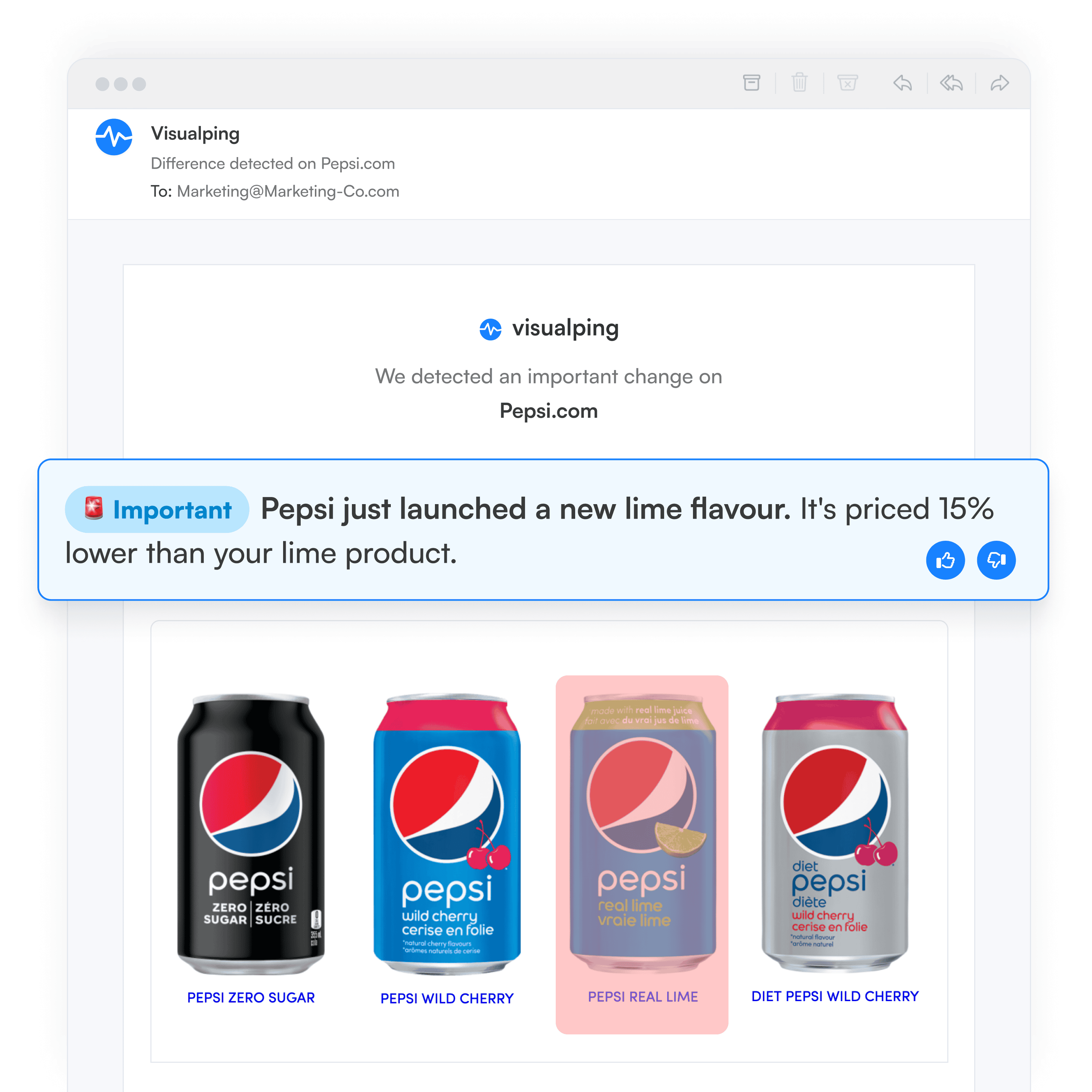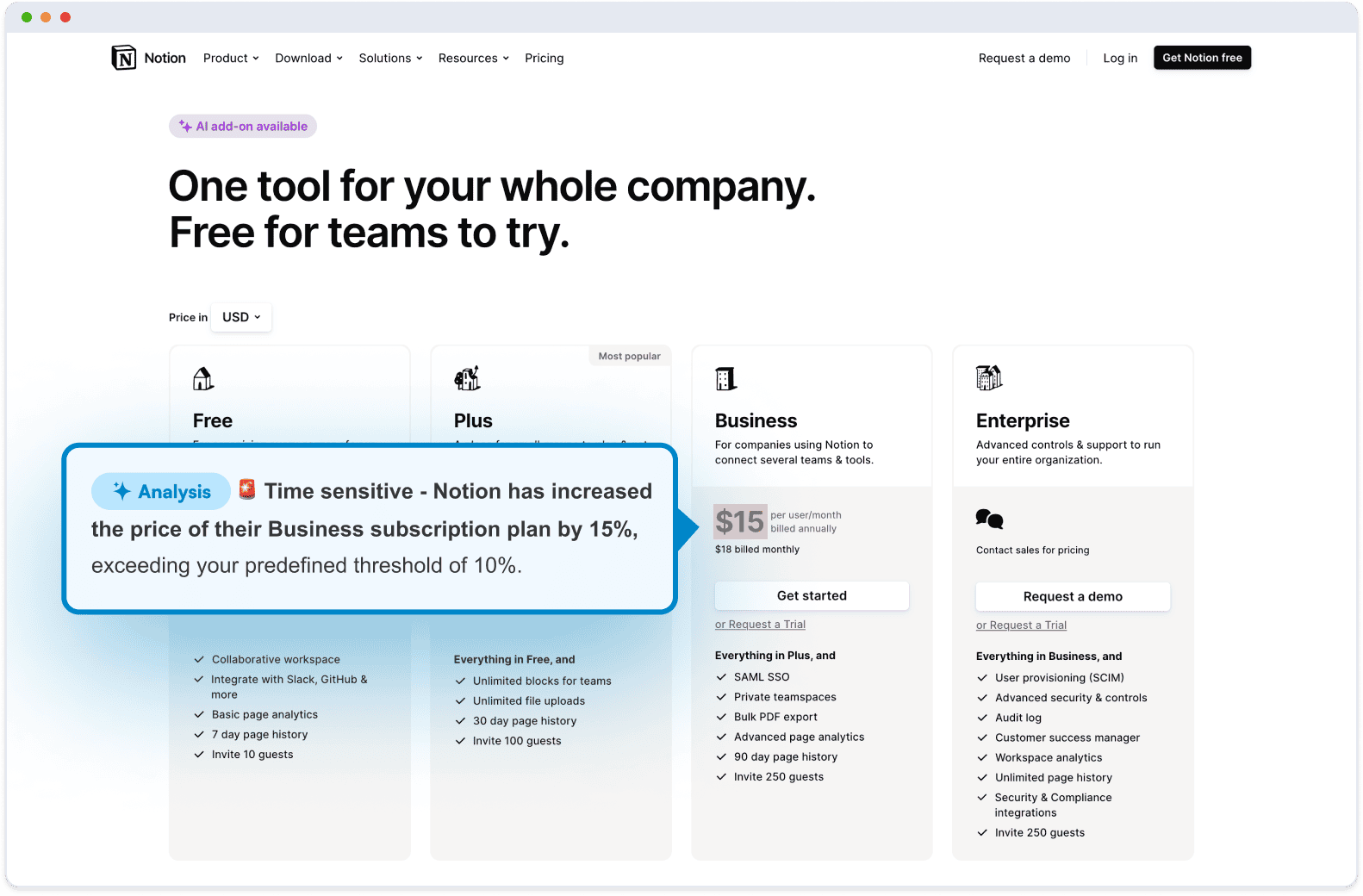Advertising Competitive Intelligence: Leveraging Insights for Market Success in 2025
By Eric Do Couto
Updated January 9, 2025

Introduction
Understanding advertising competitive intelligence is important for businesses seeking a strategic edge. By gathering and analyzing data on competitors' advertising strategies, companies can make informed decisions to enhance their marketing efforts. This practice helps businesses identify campaign gaps and discover new growth opportunities.
Competitive intelligence involves tracking and evaluating various elements such as ad copy, creative assets, and targeting techniques used by competitors. Tools like Ahrefs, Visualping, and Sprout Social offer insights into competitors' SEO, content, and overall marketing strategies, providing a comprehensive view of the competitive landscape.
Utilizing competitive intelligence enables companies to anticipate market trends and adapt their strategies accordingly. By staying informed about competitors' movements, businesses can improve their advertising effectiveness and increase their market share. Understanding these factors can lead to sustained competitive advantages in the rapidly evolving marketplace.
Fundamentals of Advertising Competitive Intelligence
Advertising competitive intelligence (CI) involves gathering and analyzing data about competitors' advertising strategies. This helps businesses to tweak their own strategy, ensuring they stay competitive and effective in their advertising efforts.
Understanding Competitive Intelligence (CI)
Competitive intelligence (CI) refers to the process of collecting and analyzing information about what competitors are doing. In advertising, CI focuses on various elements like ad spend, creatives, channels used, and promotional techniques. The goal is to gain valuable insights that inform strategic decisions. Unlike espionage, CI relies on publicly accessible information and is conducted within legal boundaries.
The Importance of CI in Advertising
CI is crucial for developing effective advertising strategies. By understanding competitors' campaigns, businesses can identify gaps in their efforts, capitalize on opportunities, and avoid costly mistakes. Insight into competitors' ad performance helps optimize budget allocation and creative efforts. This can lead to more compelling and targeted advertisements, enhancing overall market positioning.
Key Concepts and Definitions
Several terms are integral to grasping CI in advertising:
- Ad Spend: The amount of money a company invests in advertising.
- Creatives: The visual and textual content of advertisements.
- Channels: Platforms where ads are placed, such as social media, TV, or print.
- Impressions: The number of times an ad is viewed.
By mastering these concepts, businesses can more effectively analyze competitor strategies and fine-tune their advertising efforts. For instance, observing a spike in a competitor's ad spend on social media could prompt a reevaluation of one's own budget distribution across channels.
Building a CI Foundation
Building a solid foundation for Competitive Intelligence (CI) involves establishing a clear focus, identifying competitors and market conditions, and cultivating a culture that values and utilizes CI practices effectively. Each element is essential to creating a robust CI capability within an organization.
Establishing a Focus
Establishing a focus is critical to the success of a CI initiative. Companies should start by defining clear objectives and specific areas where intelligence will provide the most value. This often includes understanding the company's goals, key market opportunities, and potential threats. Identify specific business needs such as product development, marketing strategies, or new market entry. Align CI efforts with strategic business goals to ensure that all intelligence activities support the company's overall direction. Develop a structured process for gathering and analyzing information to ensure consistency and reliability.
Identifying Competitors and Market
Identifying competitors and understanding the market landscape are fundamental tasks in CI. This involves more than just knowing who the direct competitors are; it also includes recognizing indirect competitors and market trends. Conduct comprehensive competitor analysis by evaluating their strengths, weaknesses, market positioning, and strategic moves.
Use various tools and methodologies for data collection, such as SWOT analysis, PEST analysis, and Porter's Five Forces.
Stay updated on market trends, regulatory changes, and technological advancements that could impact the industry.
Creating a CI Culture
Creating a competitive intelligence culture within an organization ensures that CI practices are integrated into daily operations and decision-making processes. This culture should promote the value of CI and encourage participation from all levels of the organization. Educate employees about the importance and benefits of CI through training programs and workshops.
Foster open communication and collaboration across departments to share insights and intelligence.
Implement incentive programs to motivate employees to contribute to CI efforts, such as recognizing and rewarding contributions to intelligence gathering and analysis. By focusing on these foundational elements, an organization can build a strong and effective CI capability that supports strategic decision-making and enhances competitive advantage.
CI Data Collection and Analysis
Competitive intelligence (CI) data collection and analysis involve gathering pertinent information from various sources and utilizing specific tools and techniques to derive actionable insights. These insights can shape strategic business decisions and enhance competitive advantage.
Sources of Competitive Data
CI data originates from multiple sources. Digital platforms such as company websites, social media profiles, and online reviews offer abundant information about competitors. Public records, financial reports, and industry publications provide in-depth and credible data.
AI website monitoring tools, like Visualping, can also monitor any web sources on the internet, and notify businesses, in real-time, about any relevant changes, such as mentions of competitors.
Data from sources like competitors' websites can help build a comprehensive understanding of competitors' strategies and market movements.
Analytical Tools and Techniques
The analysis of competitive data employs various tools and methodologies. Platforms like Semrush offer detailed insights into competitors' SEO performance, keyword strategies, and ad campaigns. Software like Ahrefs and Klue provides robust analytics on backlinks, content performance, and market positioning. Techniques include SWOT analysis, competitor benchmarking, and trend analysis. These methods help businesses identify strengths, weaknesses, and opportunities, creating a solid foundation for strategic planning.
Turning Data into Actionable Insights
Converting raw data into actionable insights is crucial. Analyzing trends and patterns can reveal gaps in the market and areas where competitors excel. Integrating findings into your business strategies involves setting clear objectives based on opportunities identified in your CI research. For instance, businesses can adopt similar strategies if a competitor’s social media campaign messaging and positioning are highly effective. Companies can further refine their approaches by utilizing tools like Invoca for call tracking and lead management. The goal is to transform gathered data into strategic actions that drive growth and outperform competitors.
Leveraging Digital Channels for CI
Marketers can effectively utilize various digital channels to gather competitive intelligence (CI). These include search engine optimization (SEO), social media monitoring, and content marketing analysis, each providing unique insights into competitors' strategies.
Website Change Tracking
Website Change Tracking tools enable your CI team to stay ahead of your competitors by tracking and documenting changes over time on their websites. Tools like Visualping can monitor any web pages with AI, and allow you to get automated alerts when changes occur. Alerts help you react quickly to new marketing strategies, product launches, copy and positioning changes, new key hires, and price changes by your competitors.
Visualping's alerts include an AI summary of the change, distilled in two to three lines, so it's easy to understand the update quickly. The alerts also include a screenshot of the page for you to see.

SEO and SEM Perspectives
SEO and search engine marketing (SEM) are crucial for understanding competitors' online visibility and keyword strategies. By analyzing competitors' keywords and search rankings, businesses can identify opportunities and gaps in their own strategy. Tools like SEMrush enable detailed examination of competitors' SEO efforts, including backlink profiles and high-ranking content. Tracking and comparing search engine performance provides actionable insights into what works best in the current market landscape.
Social Media and Social Listening
Social media platforms offer a wealth of data on competitors' brand positioning and customer interactions. Social listening allows businesses to monitor mentions, track engagement rates, and analyze competitors' content strategies. Sprout Social emphasizes the importance of tracking and analyzing competitors' social media activities. This approach helps businesses identify trends, potential opportunities, and areas for improvement in their own social media strategies.
Content Marketing Analysis
Analyzing competitors' content marketing efforts involves assessing their content's type, quality, and performance. This includes blog posts, videos, infographics, and other digital content. Use tools such as Ahrefs and content marketing platforms to track how well competitors' content performs. Look at factors like engagement metrics, shareability, and conversion rates. Insights from these analyses can guide content creation and distribution strategies, helping businesses create high-performing and competitive content.
Strategic Application of CI
The strategic application of competitive intelligence (CI) involves evaluating competitor positioning and strategy, identifying market trends and opportunities, and developing tactics tailored for gaining a competitive edge.
Competitor Positioning and Strategy
Understanding competitor positioning and strategies can provide invaluable insights for any business. By analyzing competitor data, companies can determine how their rivals are positioned in the market, their strategy, and their strengths and weaknesses.

Examining and tracking pricing models, marketing campaigns, and product offerings reveals how competitors attract and retain customers. This knowledge enables businesses to position themselves effectively and adopt strategies that counter their competitors' moves. Competitive intelligence tools and techniques make this process systematic and efficient, ensuring decision-makers have the most relevant data.
Market Trends and Opportunities
Tracking market trends and opportunities is crucial for staying ahead in a fast-paced business environment. Competitive intelligence allows businesses to monitor shifts in consumer behavior, emerging technologies, and regulatory changes.
This information allows companies to anticipate market demands and quickly adapt to new opportunities. This could mean launching new products, entering untapped markets, or adjusting marketing strategies to meet evolving customer needs better.
Regularly updating competitive intelligence ensures companies remain agile and responsive, enabling them to seize opportunities as they arise. Firms can make well-informed strategic decisions by combining quantitative data and qualitative insights.
CI Software and Platforms
Competitive intelligence software offers centralized platforms for collecting and analyzing data. Tools like SimilarWeb monitors web traffic and digital marketing strategies.
Crayon provides a comprehensive CI platform that tracks competitor activity, alerts on significant changes, and compiles insights into actionable reports. These platforms integrate with other enterprise systems, facilitating seamless data sharing and enhanced decision-making.
Operationalizing CI Insights
The key to effectively leveraging Competitive Intelligence (CI) lies in applying the insights gathered within your organization's operational framework. This involves enhancing the capabilities of sales and marketing teams, integrating insights into business decision-making processes, and establishing robust monitoring and reporting systems.
Impact on Sales and Marketing Teams
By better understanding competitor strategies and market trends, sales and marketing teams benefit substantially from CI. This information enables them to tailor their approaches more effectively.
For example, competitive marketing intelligence reveals competitors' spending, partnerships, and software preferences. With these insights, sales teams can refine their pitches, and marketing teams can create more targeted campaigns.
Moreover, recognizing customers' specific desires and pain points helps prioritize efforts, resulting in increased sales and more successful marketing initiatives.
Integration with Business Decision-Making
Integrating CI insights into business decision-making ensures that strategic choices are well-informed and competitive. Decision-makers who understand competitor behaviors and market shifts can navigate more effectively.
CI insights can inform product development, pricing strategies, and market entry decisions. For example, recognizing a competitor's shift towards a new technology may prompt a company to accelerate its tech investments.
Implementing a structured decision-making framework that regularly incorporates CI can substantially enhance a company's agility and competitive positioning.
Monitoring and Reporting
Regular monitoring and reporting of CI activities are essential for maintaining a strategic advantage. Setting up systematic tracking against key performance indicators (KPIs) ensures that insights remain current and actionable.
Effective reporting tools, such as dashboards and automated alerts, help teams to quickly interpret data.
Consistent analysis and adjustment via monitoring and reporting enable businesses to stay ahead of the competition and quickly respond to market changes. This proactive stance is crucial for long-term success.
Performance Measurement and Optimization
Precise performance measurement and optimization are key for effectively utilizing advertising competitive intelligence. Companies must benchmark their efforts, assess their market share, review strategies and tactics, and maintain a continuous improvement process.
Benchmarking and Market Share
Benchmarking involves setting performance standards against industry leaders to gauge relative success. Companies can track ad spend and creative strategies across 90 markets using tools like Nielsen Ad Intel. This data is crucial for understanding market share and identifying gaps. Market share analytics helps spot trends and shifts in consumer behavior. Companies should regularly compare their market share with competitors to identify strengths and weaknesses. Accurately measuring market share provides insights for making informed decisions about future campaigns and resource allocation.
Reviewing Strategies and Tactics
Reviewing strategies and tactics involves assessing current approaches to advertising and making necessary adjustments. Companies can use advertising analytics to track various metrics such as CTR, conversion rates, and LTV to evaluate campaign performance. This analysis helps refine targeting, creative content, and budget allocation.
It is important to look at both successful tactics and underperforming efforts. Successful tactics can be scaled up or replicated, while less effective ones should be tweaked or discarded. Regular review cycles enable agile responses to market changes, ensuring marketing efforts remain relevant and impactful.
Continuous Improvement Process
A continuous improvement process requires ongoing evaluation and refinement of advertising efforts. Implementing advanced measurement approaches, such as multi-touch attribution, as mentioned in Nielsen’s practices for maximizing marketing effectiveness, provides better insight into your advertising effectiveness, and return on investment.
This ongoing process helps identify areas for enhancement and innovation. Companies can improve their return on investment (ROI) by continuously optimizing based on performance data.
Emphasizing frequent analysis and adapting the continuous improvement mindset ensures that your organization's advertising strategies evolve alongside market dynamics, and continue to contribute to your organization's bottom line - maintaining a competitive edge.
Ethical Considerations in CI
Ethics plays a crucial role in competitive intelligence (CI). Adhering to the highest ethical standards ensures integrity in the process of gathering and analyzing information. Professionals in the field must be vigilant to avoid unethical practices.
One fundamental principle is to use publicly available information. This ensures that the data collected is obtained legally and transparently. Adhering to this guideline protects intelligence professionals and their organizations from legal repercussions.
Integrity is another cornerstone of CI ethics. Practitioners should avoid deceptive practices such as pretending to be someone they're not to acquire information. Honest interactions foster trust and reliability in the industry.
The SCIP Code of Ethics provides a robust framework for ethical behavior in CI activities. It sets guidelines for practitioners, ensuring consistent ethical practices across the industry. Social media's role in CI has expanded, requiring updated guidelines to reflect this shift. Ethical practices in this area are necessary to prevent the misuse of personal data and protect user privacy. Transparency in communication is also essential. Clear and honest reporting of CI findings helps build credibility and trust within the organization and ensures that decisions based on CI are informed and ethical.
Essentially, ethical considerations in CI revolve around adhering to legal standards, maintaining integrity, and ensuring transparency. Your goal should be to achieve a fair, competitive advantage without compromising your or your teams values.
Understanding the power of competitive intelligence in each of these contexts can lead to more informed decisions and improved market adaptation strategies.
Good luck with your Competitive Intelligence work!
Visualping: competitor monitoring made simple
Get targeted updates from the competition on autopilot. Trusted by 85% of Fortune 500 companies.
Eric Do Couto
Eric is the Senior Partnerships Manager at Visualping. Eric has over 10+ years of experience in Marketing and Growth Leadership roles across various industries.